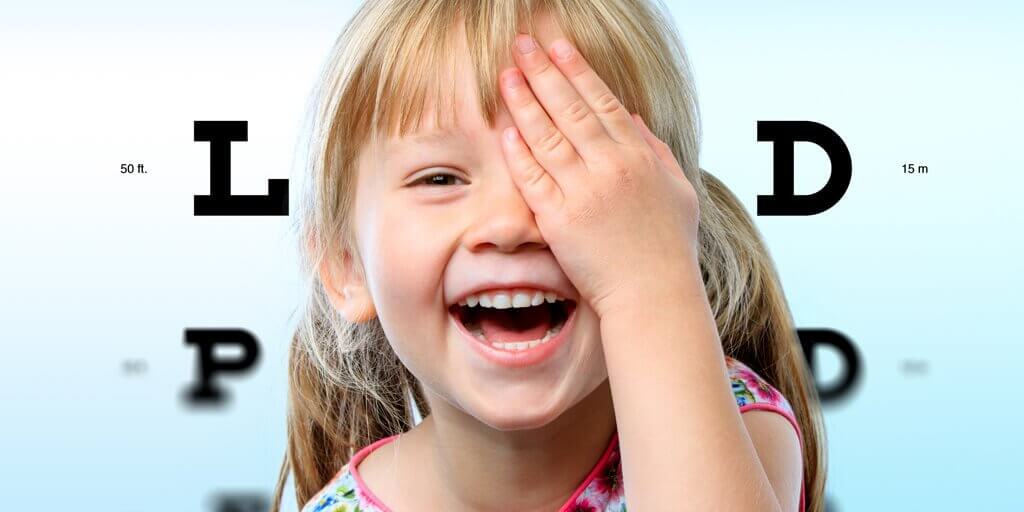Symptoms & Treatment for Convergence Insufficiency & Amblyopia

Voted Best of Berks—
eight years in a row!

Convergence insufficiency (CI) is a common eye muscle coordination problem. When reading or doing close work, a person’s eyes must turn in (converge) for the words to be clear and single. In CI, the eyes do not turn in easily and, as a result, extra convergence effort must be used to force the eyes to turn in. This additional effort can cause a number of symptoms such as eyestrain, headaches, blurred vision and double vision.
Amblyopia is also known as “lazy eye.” Amblyopia typically begins during infancy and early childhood. In most cases, only one eye is affected. But in some cases, amblyopia can occur in both eyes. The most common treatment is patching.
Patching is done to improve vision in the amblyopic or “lazy” eye by forcing the child to use the eye which is not covered. Patching is the most effective way, and often the only way, to improve the vision of an eye with amblyopia. If not treated, amblyopia or “lazy eye” may result in permanent visual loss!
The sticky patch should be placed on the child’s face and not the glasses as the child will peek around a patch which is placed on the glasses. Opticlude® and Coverlet® are two brands of adhesive patches which are available. The patches may be purchased at a drug store.
A cloth patch which fits around the front and sides of your child’s glasses also works well. Cloth patches are available for purchase at optical or drug stores, or, if you like to sew, you can make one yourself. Important: Do not use a “pirate patch” which is held on by string or elastic. Your child will peek around this type of patch. Do not put a patch, tape, or nail polish on a spectacle lens, as the child will look around it.
Common Problems with Patching
There are three common complaints about patching as a treatment for amblyopia. Please do not be discouraged. Patching is often the most important treatment for your child’s vision. The difficulties are temporary but the benefits are lifelong.
Initial Adjustment: Getting used to the patch is the most difficult part. The worse the vision in the amblyopic or “lazy” eye, the harder will be the adjustment. The first 24 hours are critical! It is extremely important that the patch not be removed during this time. It is important to be gentle but firm with your child during this period. You may have the child draw a picture on the patch, place a sticker on the patch, or place a patch on the child’s favorite stuffed animal or doll in order to encourage your child to wear the patch. Try rewarding your child for wearing the patch for an hour, a day, and a week. Keep it up! As your child’s vision improves patching will be easier and will eventually become routine
Skin Irritation – The adhesive on the patch may irritate your child’s skin, especially during the summer. If the skin becomes irritated the adhesive area can be trimmed so that less adhesive contacts the face. The patch should also be moved slightly each time it is applied. In that way the same part of the skin is not always under the adhesive.
If skin irritation continues then lotion with Aloe Vera may be applied to the irritated areas at times when the patch is not being worn.
Tincture of Benzoin may be obtained at a drug store and will effectively protect your child’s skin from the adhesive. Tincture of Benzoin may be applied to the skin and left to dry for a minute before applying the patch (please be very careful that you do not get it in your child’s eye).
If skin irritation becomes worse, please do not stop patching. Instead, you may use gauze eye pads and strips of medical tape, avoiding the irritated areas of skin. If your child wears glasses, a cloth patch may be obtained which fits around the front and sides of the glasses.
Crossing of the eye under the patch – Occasionally, during patching an underlying misalignment between the eyes may worsen. This means the patching program is making the underlying condition more obvious and DOES NOT necessarily mean the patching is causing damage. However, please call the doctor if you feel your child’s eyes are crossing more.
Actually, patching is intended to allow your child to see well enough to use the previously “lazy” eye. In children with misaligned eyes the previously preferred eye might turn while your child now uses his or her “lazy” eye.
Find a Doctor
Physician information including education, training, practice location and more.
Schedule an Appointment
Call 800-762-7132 or make an appointment online.





